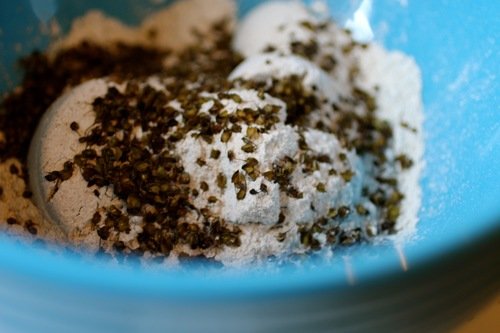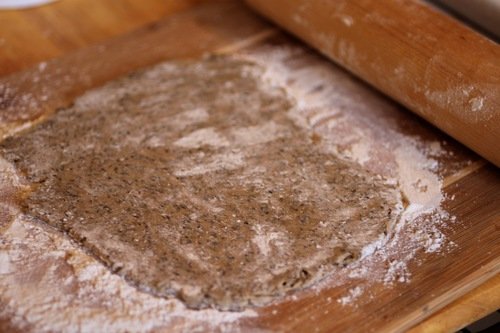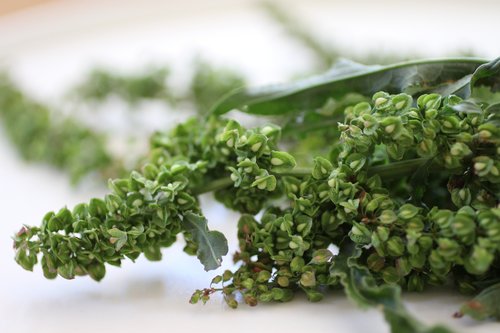Rumex Crisps: Dock Seed Crackers
The latin name for curly dock, a wild plant with edible leaves and seeds, is Rumex crispus (see previous post for foraging/harvesting info). Thus, when I decided to use the toasted seeds in a cracker, the name was obvious. Let's be honest - I made these crackers specifically because I came up with the name Rumex crisps. I'm a sucker for wordplay. On the plus side, the seeds paired beautifully with the rye flour for a delicious, crispy, nutty-tart cracker that is great alongside rich creamy cheeses and sweet dried apricots (or other fruit). The below recipe makes about 36 2-inch crackers, depending on how thinly you roll out the dough.
Toasted vs. raw dock seeds.
1/2 cup toasted dock seeds
3/4 - 1 cup rye flour
1/4 teaspoon sea salt, plus more for sprinkling
1 tablespoon grapeseed oil, plus more for brushing
1/2 tablespoon honey
1/3 cup water
Preheat oven to 300 degrees F.
In a large bowl, blend together dock seeds, 3/4 cup rye flour, and salt. Stir in grapeseed oil, honey, and water until incorporated. Add more rye flour as needed so dough is no longer sticky, but still moist.
Divide dough in half and roll out thinly on a floured surface (not paper-thin, but "cracker-thin"). Don't stress too much about the thickness - if the crackers are thicker, they'll just take a bit longer to cook.
Cut crackers into any shape that you like, such as squares, diamonds, or strips, and place them on a baking sheet. Crackers can be close together, as they hold their shape as they cook. Gather dough scraps, re-roll, and cut as needed. Repeat with remaining dough half.
Brush crackers lightly with grapeseed oil (or rub with fingers), sprinkle with a little more salt, and bake for 15 - 20 minutes. Remove from oven and cool on rack. Store in an airtight container and enjoy for up to 2 weeks. If you live in a humid environment, crackers can be re-toasted in the oven.
A diamond-shaped Rumex crisp with a creamy sheepsmilk cheese and vetch tip flower.
Toasted Dock Seeds
Raw dock seeds are beautiful, but (in my opinion) not as tasty.
Dock, or Rumex spp. (general and foraging info here), has tart edible leaves that are available in the spring, but the real treat to me are the seeds of the dock, which you can find in the later spring through summer on the West Coast (and most of the world). The seeds can be eaten raw, but are better toasted and, being a member of the buckwheat family, can be used like you would buckwheat (which is a seed itself, not a grain). Try mixing the seeds into a granola or dough for crackers, sprinkling them over poached fish, or grinding them into a flour and using it for baking.
To remove the seeds from the plant, first wash and shake out the dock to dry it then simply run your fingers down the length of the stalk, pulling off seeds as you go. You might want to do this outside, as dock seeds have a tendency to "jump".
Toast the seeds in a cast iron pan on medium high, stirring frequently to cook the seeds evenly. In my experience, 1 cup of seeds in a medium cast iron pan will take about 10 minutes, but this will changed depending on how many seeds you're toasting at once and size of pan (less seeds = more exposure to heat).
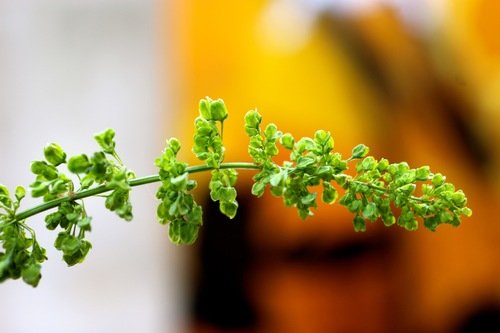
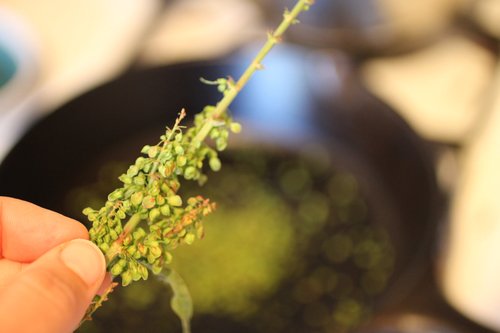


Dock seeds, toasty brown.




